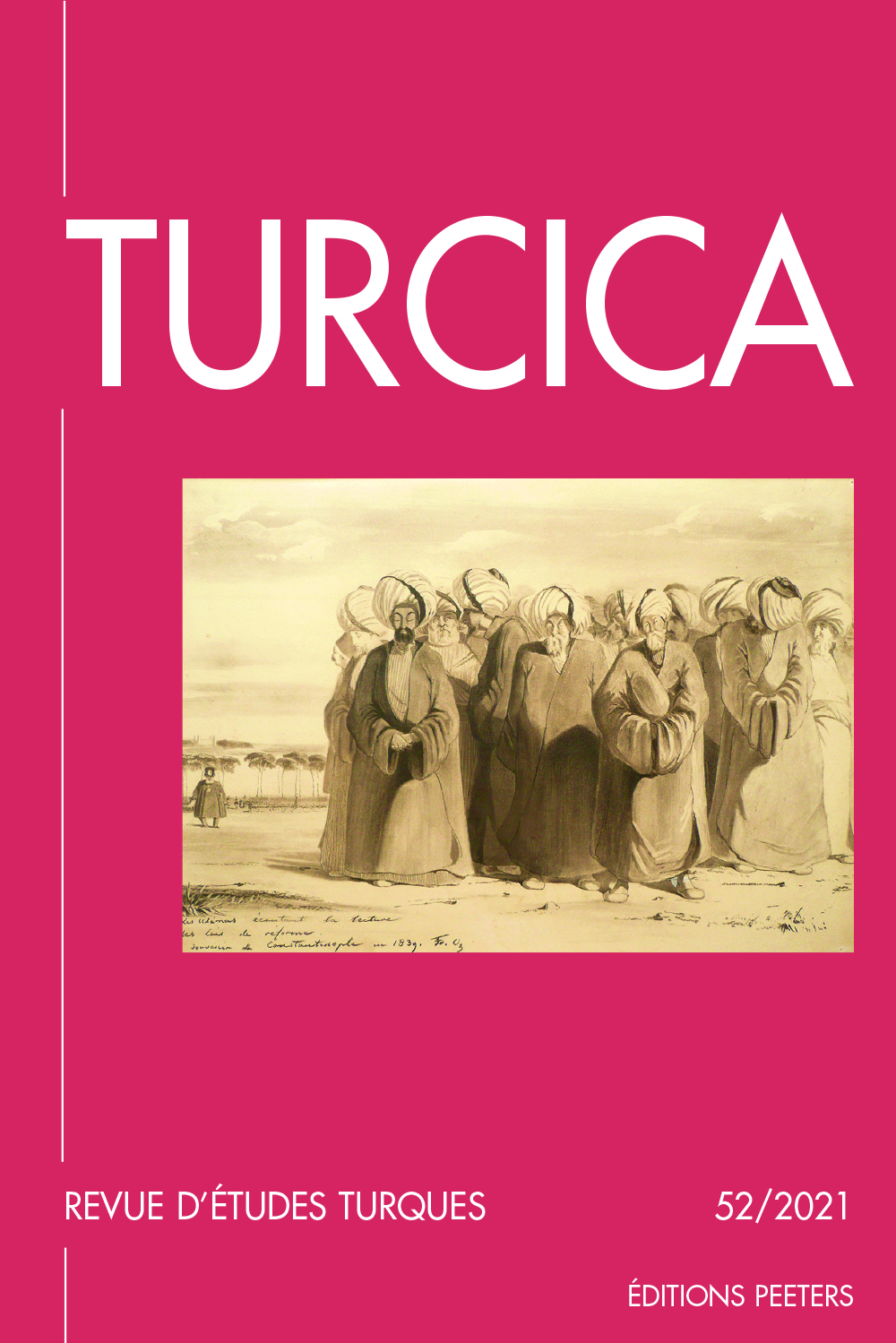 previous article in this issue previous article in this issue | next article in this issue  |

Preview first page |
Document Details : Title: Le sultan caché Subtitle: Réclusion du souverain et mise en pouvoir à l'époque de Abdülhamid II (1876-1909) Author(s): GEORGEON, François Journal: Turcica Volume: 29 Date: 1997 Pages: 93-124 DOI: 10.2143/TURC.29.0.2004316 Abstract : Au cours du dernier siècle de l’Empire ottoman, on constate que les sultans, depuis Mahmud II jusqu’à Mehmed Reşad, prennent part davantage à la vie publique, se rendent plus «visibles» à la tête de l’État (participation à des cérémonies, portraits impériaux). Dans cette tendance longue, le règne de Abdülhamid II (1876-1909) marque une rupture∞: en dehors de la cérémonie du selamlık, le sultan n’effectue pas de sortie publique hors du palais de Yıldız, et il empêche la diffusion de son portrait. Il est en quelque sorte le «sultan caché». Au delà des raisons psychologiques souvent avancées (la peur), il convient d’analyser les implications politiques d’une telle attitude. Cet article cherche à montrer que le renfermement du Sultan est à mettre en rapport avec les nouvelles orientations idéologiques du régime (accent mis sur le califat, appui sur les couches conservatrices) et avec la conception autoritaire du pouvoir qui s’enracine dans la tradition ottomane tout en se donnant de nouveaux moyens de gouvernement. The Hidden Sultan. Seclusion of the Sovereign and Stage-effect of Power in the Times of Abdülhamid II, 1876-1909 It is noticeable that in the last century of the Ottoman era, the sultans — from Mahmud II up to Mehmed Reşad — became rather prone to «visibility»: in public life and at the head of the State, in ceremonies and on imperial pictures. But some disruption occurred in this long trend with the reign of Abdülhamid II. Indeed, except for the selamlık ceremony, the latter never stepped out of Yılzıd Palace publicly; besides, he prevented the propagation of any portraits of himself. He was, so to say, the «Hidden Sultan». Beyond the psychological explanatory motives frequently set forth, as fear for instance, the political implications of such a stand deserve further investigation. The article aims to evince that the sultan’s reclusion is related to the new ideological trends of the régime — stress laid on the caliphate, support seeked among conservative circles — as well as to an authoritative conception of power which takes root in Ottoman tradition while it gets at new means of governance. |
 |


